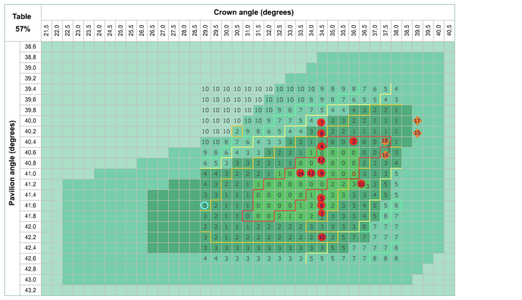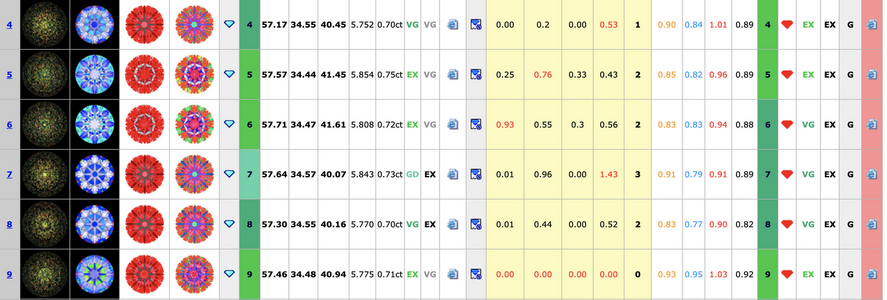We (OctoNus, Lexus, Garry) did it 15 years ago.At 5m the diamond even a 5ct is a tiny dot, the contrast between that dot and what is behind determines if it stands out or not. Since the eye will not pick up fine details the brightness is a blurred average of the dot relative to the background.
Obstruction will play little part in it.
However shallow pavilions are more directional, there could be an advantage there.
LGD is not that expensive, Garry consider having some cut and play with them?
You could even send them to others to look at.
That was not practical with mined but 4-6 1ct LGD might make it affordable?
See MSS samples 4 and 9.


It is a very long story. Now it can be done more precisely and for larger stones if we use LGD (Lab-Grown Diamonds). LGD is much more convenient for such tests, not only because it's cheaper but also because there are fewer issues with transporting them across different countries' borders.
The problem is not in cutting more samples (we cut them constantly; in the last 2 months, we've cut nearly 10 3ct LGD diamonds to study the impact of Stria on the Optical Performance of LGD diamonds). The challenge lies in organizing scientifically valid tests based on consumer viewing of real diamonds. This is an extremely complex and expensive procedure. This process is much costlier than working with samples, even if they are natural diamonds.
Personally, I have long abandoned the practice of surveying consumers based on viewing real diamonds. It's much simpler to show and discuss Dibox2.0 movies.



300x240.png)